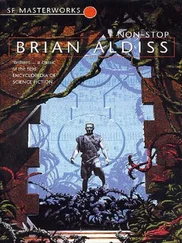Brian Aldiss - White Mars
Здесь есть возможность читать онлайн «Brian Aldiss - White Mars» весь текст электронной книги совершенно бесплатно (целиком полную версию без сокращений). В некоторых случаях можно слушать аудио, скачать через торрент в формате fb2 и присутствует краткое содержание. Год выпуска: 1999, ISBN: 1999, Издательство: Little, Brown UK, Жанр: Фантастика и фэнтези, на английском языке. Описание произведения, (предисловие) а так же отзывы посетителей доступны на портале библиотеки ЛибКат.
- Название:White Mars
- Автор:
- Издательство:Little, Brown UK
- Жанр:
- Год:1999
- ISBN:0-316-85243-0
- Рейтинг книги:5 / 5. Голосов: 1
-
Избранное:Добавить в избранное
- Отзывы:
-
Ваша оценка:
- 100
- 1
- 2
- 3
- 4
- 5
White Mars: краткое содержание, описание и аннотация
Предлагаем к чтению аннотацию, описание, краткое содержание или предисловие (зависит от того, что написал сам автор книги «White Mars»). Если вы не нашли необходимую информацию о книге — напишите в комментариях, мы постараемся отыскать её.
White Mars — читать онлайн бесплатно полную книгу (весь текст) целиком
Ниже представлен текст книги, разбитый по страницам. Система сохранения места последней прочитанной страницы, позволяет с удобством читать онлайн бесплатно книгу «White Mars», без необходимости каждый раз заново искать на чём Вы остановились. Поставьте закладку, и сможете в любой момент перейти на страницу, на которой закончили чтение.
Интервал:
Закладка:
With the aid of the quantcomp, the mentatropist could dispatch “remotes” to explore the entire structure of the brain and nervous system. Vera spoke enthusiastically of the “wired neurons” that served this purpose.
“These synthetic neurons send back a receivable signal, and can be programmed to trigger the release of chemicals that store memory. We guide the wired neurons to reach the appropriate synapse. We don’t really expect you to comprehend the science behind our science—which may seem like magic to the uninformed—but Willa and I assure you that our work is a mingling of technical ability and sheer artistry.
“Indeed, we are somewhat taken aback that you find it necessary to question our abilities. You have received our CVs, after all.”
The Composite was engaged for the task of remedying Bevis Paskin Peters.
Nevertheless, the mentatropy of Peters, conducted by the Willa-Vera Composite, was a slow business, continuing over many months.
I was permitted to be present at their first session.
The remotes travelled slowly forward, downward. Neurons glowed and died on the monitor like small security lights as they ventured onward, probing various cytoarchitectonic areas. To the remotes, every neuron marking a local circuit was like a single star, while about them macroscopic systems resembled entire galaxies, dense with suns and dark matter.
Something that resembled light flickered away from their progress.
The remotes journeyed through the hemispheres of the cerebrum, some diverting to the diencephalon, a collection of nuclei below the hemispheres, into the thalamus and hypothalamus. Other remotes entered regions of the limbic system and putamen. Still others toured in the cerebral cortex, the blanketing mantle of the cerebrum, a massive and complex constellation of synaptic activity, by one system of measurement a mere 3 millimetres thick.
It was these latter remotes that detected an area of disturbed neurotransmitters. They moved into the region and began to activate the groupings involved. Here they entered the large-scale quantum coherences that are essential to the generation of consciousness.
On the screens where the neuroscientists, Willa and Vera, watched, pictures and actions became evident. The skill of the women lay in interpreting the pictures as the remotes fired adjacent synapses.
“Slightly viridian,” said Willa.
“Needs fewer fibres,” said Vera. They had their own slang for what they did. “We’re getting coherency.”
Specific tightly interconnected groups of neurons acted coherently as a single unit. The validity of these groupings was sustained by a coherent quantum-mechanical process, like that of a superconductor or superfluid.
With tuning, the fibres sank back to form a huge black anatomy, its head hardly visible. Screaming cream things wavered in the background. A pudding cowered in a puddle.
Home life of Bevis Paskin Peters, aged three. Perception, as someone had said, was all. The sun was square and permeated by fish.
The Composite caught a signal from a remote homing in on the amygdala. They checked its programme. Here, deep in the limbic brain, wavered a primitive recollection. It had remained there, undiminished by time, since electrical resistance diminishes to zero in the HTC structures located there, much like the similar high temperature superconductors in our electrical cables.
Although a good theoretical understanding of ordinary superconductivity had been established halfway through the previous century, a proper understanding of HTCs had to wait until the early years of the twenty-first. This understanding had been put to important use in the new brain sciences. The neuron probe began to participate in the collective quantum state, showing a blur on the mentatropy screen which refined itself into an interpretable picture.
Pressures created an oval viewing like a squeezed lemon. Again a monster male, shouting and raving in deeper than viridian, the waves of anger misshaping it. The monster loomed over a limp white worm. Pale in pink the helpless something fluttered what might have been a hand.
The two separate remote fleets activated their groupings. The effects of quantum entanglement began to manifest themselves. The patient’s anciently stored pain became now.
A door of jelly slammed and wiped the oval all away.
“He resents us,” murmured Willa. “We’ll rest him and try again.”
It took expertise, but Willa-Vera interpreted the code to recognise in the white worm the being that would later grow to become the huge black body, the parent.
“Father dominant,” muttered Vera. “Son wishing to be father?”
I could contain myself no longer but said I hardly understood what was going on.
“Basically, it’s fairly simple,” said the fragile Willa Mendanadum, standing on tiptoe in her eagerness to explain. “Our remotes are travelling in areas where the effects of quantum state-reduction first become important. That’s where a quantum superposition actually becomes one of the classical alternatives. In fact, it appears that the entire phenomenon of consciousness is activated only when certain such quantum-coherent states begin to resolve into these classical alternatives.”
“But I don’t know what you mean by classical alternatives!” I wailed.
“Oh, that’s simple too,” Vera White said, with a knowing smile at her partner. “Imagine the nebulous borderline between the quantum and classical levels of physical activity, right? This has to do with the measurement problem of quantum mechanics: why is it that when we measure a quantum system we get one answer or another—the classical alternatives—instead of a quantum superposition of alternatives, which are an inherent part of the quantum-mechanical description of nature?”
I shook my head, feeling foolish.
“Well, you see, when an observer steps in, the rules change. The standard quantum-mechanical procedures are interfered with! So what effect does the observer have? Why, quantum state-reduction comes in, and one thing or another happens, as Willa has said.”
She turned to her little partner. “Ready for another probe? Try coordinates between D60 and—let’s open E75.”
They peered into their spec-monitors. Behind them, paralysed but aware, strapped on the couch while the picoprobes toured his brain, lay Peters, screaming without sound.
Mentatropy, which would eventually hunt down his terrors and weaknesses and eradicate them, was not an easy option.
Neuroscience was a subject of popular satire; but, no other workable system of remedy presenting itself, since nobody was prepared to turn themselves into hangman or jailer, the mentatropists continued their work.
So gradually the dispute regarding the treatment of criminals died down, as other matters arose to be considered.
Signals were still being sent to Earth Control, the technical centre, and to the UN, both on roughly Feneloni’s suggested lines. The response was evasive. The ramifications of EUPACUS’s collapse had bitten deep into the socio-political structure of the planet. Until the recession was over, all matrix operations had been suspended. So we were told.
Now an extra body of advisers congregated about Tom, who continued to be unwell. Supporters included Val Kissorian and Sharon Singh, the woman who had found the rock crystal. I must confess I was jealous of the way in which Tom so clearly doted on her. Sharon was an amiable but shallow personality.
Of the new questions arising, the most pressing concerned the education of children.
Following the murder of Alysha, the Oort Crowd closed down and the cephalopods disappeared. I ceased to associate with Paula Gallin, who was not much to be seen.
A crowd of us used to go to the Captain Nemo to sit around and talk in the evenings, while sipping coffdrinks.
Читать дальшеИнтервал:
Закладка:
Похожие книги на «White Mars»
Представляем Вашему вниманию похожие книги на «White Mars» списком для выбора. Мы отобрали схожую по названию и смыслу литературу в надежде предоставить читателям больше вариантов отыскать новые, интересные, ещё непрочитанные произведения.
Обсуждение, отзывы о книге «White Mars» и просто собственные мнения читателей. Оставьте ваши комментарии, напишите, что Вы думаете о произведении, его смысле или главных героях. Укажите что конкретно понравилось, а что нет, и почему Вы так считаете.










